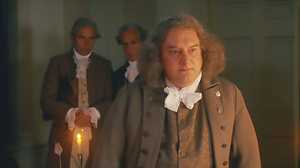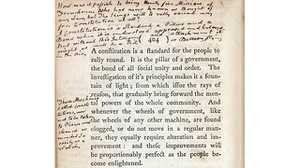The Boston Massacre

Since the Stamp Act of 1765, street violence in Boston had become commonplace. Riots and protests had been instrumental in securing the repeal of the Stamp Act in 1766. Street protests continued on through the late 1760s. Customs officials in the colonies pleaded with the British crown to send soldiers to maintain order. By October 1768 Boston was home to 4,000 British troops, about a quarter of the city's population.
A Hostile Situation
Hostility toward the soldiers escalated. Not only did the colonists object to their presence, but now "the Redcoats" or "lobsterbacks," as the soldiers were commonly known, were taking jobs from Boston's workers. Low wages had led many soldiers to secure part-time jobs in their off-duty hours. They further antagonized many Bostonians by dating local women.
A Boy Killed
On February 22, 1770, an 11-year-old boy, Christopher Seider, was killed when a customs office informant fired into an angry mob. The bullet struck the adolescent, and Seider became a martyr to the cause.
Five More Killed
More martyrs soon followed. Not even two weeks later, on March 5, agitated crowds again roamed the streets of Boston. An argument broke out between a local merchant and Private Hugh White, the British officer on duty at the Customs House. In response to the man's taunting, the soldier struck him with the butt of his rifle. The man screamed. A crowd gathered and began to lob coal, ice, and oyster shells at White. Church bells began to toll -- the signal that all able men were needed to fight a fire -- and colonists poured into the street. When reinforcements arrived under the command of Captain Thomas Preston, the mob turned its fury on the eight new soldiers, jeering and taunting them. Private Hugh Montgomery was hit with a wooden club. A shot was fired. Captain Preston, who had not issued an order to fire, tried to restore peace. But it was too late. There were five new martyrs to the colonists' cause: Crispus Attucks, Samuel Gray, Samuel Maverick, James Caldwell, and Patrick Carr.

A Call to Action
Sensing the potential for propaganda, Samuel Adams, John Adam's cousin and a leader of the revolutionary movement, immediately christened the event the "Boston Massacre." The bloody event galvanized the colonists, helping to swing sentiment away from reform and reconciliation and toward revolution. Paul Revere immortalized the incident in an engraving that depicted the mighty struggle of freedom-loving people.
The Right to a Fair Trial
The problem of holding a trial -- or, more accurately, securing a defense -- for the British soldiers loomed. After short but careful consideration -- he feared that he might put his and his family's personal safety at risk and jeopardize his legal practice -- John Adams accepted the case on the grounds that in a free country, no man, no matter what his alleged crime, should be denied the right to counsel or a fair trial. There were two trials: In the first, Captain Preston was tried and acquitted. It had been impossible to prove that he had issued an order to fire into the crowd. In the second, six of the eight soldiers were acquitted, and the two who were found guilty (it was proved they had fired their weapons) had their thumbs branded as punishment. No riots followed the not-guilty verdicts, as had been feared, and Adams' law practice did not suffer his part in the trial.







